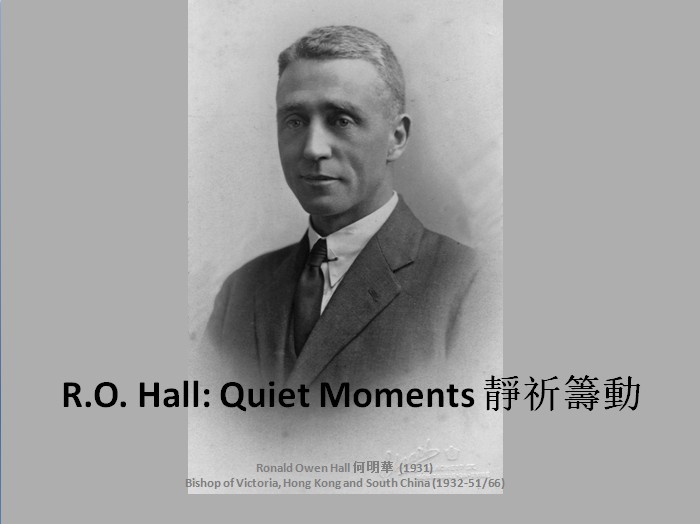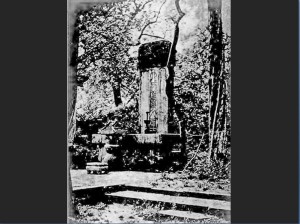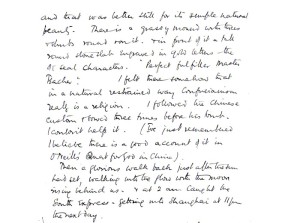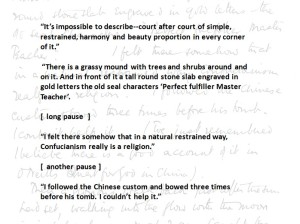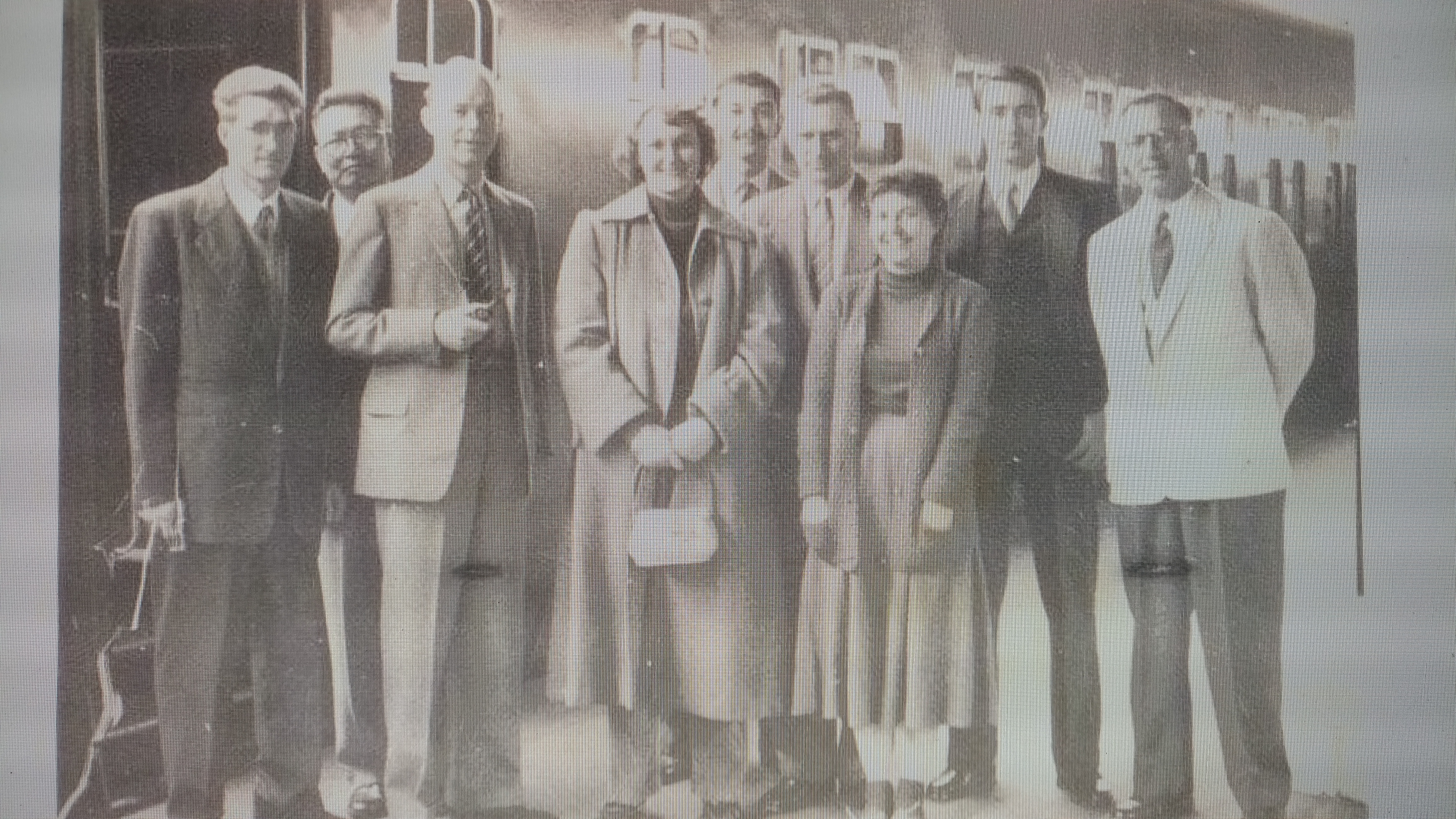 DBS staff visiting China in 1956. Jimmy Lowcock at the back.
DBS staff visiting China in 1956. Jimmy Lowcock at the back.
Shortlink 鏈接本頁:http://wp.me/p28B6z-6q
Back to Menu 目錄
To my beloved Headmaster:
Sydney James Lowcock (1930-2012), Headmaster of Diocesan Boys’ School (1961-83).
Goodbye, Jimmy
Full text of “Goodbye, Jimmy“
Thank you, Jimmy
Full text of “Thank you, Jimmy”
Goodbye, Jimmy
by Hanson Y Huang ‘68
Senior Prefect
Boarders’ Senior Prefect
Arthur House Captain
Jimmy left unexpectedly, far too early, but mercifully very peacefully, even serenely. The last time we talked, during his 81st birthday party last December, he had asked me to bring him a book after the holidays; and I had some good news for him, as if he didn’t know already, about the SJ Lowcock Foundation. But that was not to be.
I first met Jimmy on a sunny Saturday morning in September, the weekend before school started, over 50 years ago. I had just entered Primary 5 as a boarder and after running around in the school field, was resting under the huge ficus tree near the old high-jump pit when a tall gentleman with a distinctive moustache came over, took my pulse, and told me to continue running. Two days later I found out he was the new Headmaster who was destined to lead DBS through a difficult period of rapid socio-economic change, riots and short-sighted Government micro-management.
The next nine years, my formative years, were spent in this extended institution and family, and Jimmy became a figure to learn from, to emulate and to rebel against.
This was how he described his role when pleading my case, in a letter to Deng Xiao-ping in 1985, when I was battling certain evil forces in China:
“Huang Yin is well known to me since 1961. When his father passed away at an early age and his mother had to work as a journalist, he and his elder brother were placed in the boarding school at which I was headmaster.
“Since then I have acted virtually as their parent for the nine years they were in school. I know the two boys extremely well as they spent most of their time with me.”
That was an understatement, in classic Lowcock style. And many will recognize this low-key approach as he was wont to offer help without publicizing it, give advice without being overbearing, and spot potential and spend an inordinate amount of time trying to bring the best out of individuals without the beneficiary ever realizing it.
My nine years went by in a flurry, highlighted by a non-ending stream of exciting and challenging activities and, frankly, not much schoolwork; perhaps he saw my greatest potential was last-minute cramming for exams and getting away with it.
Jimmy’s emphasis on regular extra-curricular activities such as sports, music, drama, time-keeping, etc., is well known. But it was how he handled extraordinary events, such as riots, student strikes (not the first in DBS history), and the nascent urgings of democracy (he allowed all students to vote on the design of the School badge as well as the length of lunch-hour) that best exemplifies his positive and delightfully iconoclastic attitude towards life, the School and, above all, his faith and trust in his students and prefects.
Lesser known aspects of Jimmy: he was proficient in Latin; he had a taste for Danish blue even before the cheese was readily available in HK; he loved ties, and I am the happy recipient of a few; he used to smoke, not the garden-variety cigarettes but Du Maurier in an orange box, turning a vice into a style; he could be caught sitting on the living-room carpet listening to the MJQ, Take Five, Joan Baez, Buffy St. Marie, Miriam Makeba and taped sessions of DBS on RadioHK Quiz competitions.
He also tended his resignation to Goodban not once but three times, all brushed off by Goodban with a: “Don’t be a bloody fool!” Years later, when I tended mine to him, he brushed it off by turning TS Eliot against me, and we privately memorialized the affair by selecting Eliot’s Complete Poems and Plays as my Special Prize for Senior Boarders’ Prefect.
Even less known, but of great importance to DBS, was the influence of his mentor, Bishop Hall. We never found out when they first met. The Bishop was a remarkably open-minded person, with an aversion to pomp and ceremony. What Jimmy learnt from him was simple: there should be a healthy balance and separation between church and school that has been a hallmark of success for DBS, namely: to produce good people, regardless of race, religion, creed, or background. I also had the good fortune of meeting the Bishop and hearing this from him. When the Bishop retired, Jimmy, on behalf of the School Committee, presented him with a token of appreciation for his 30 years of service as Chairman, an oil painting of DBS that I painted in P5. Yes, Jimmy even held impromptu painting sessions at the HM’s House; he brought the paint and brushes, the canvas and even a bit of inspiration.
The Bishop visited Beijing in 1956, in the midst of the cold-war, as the guest of Premier Chou En-lai, and subsequently arranged for a group of DBS and DGS teachers, including Jimmy, to visit China the same year. He was therefore not a bit surprised when I visited Beijing in 1972, which led, indirectly, to the letter quoted earlier.
The Chinese connection ran even deeper. To promote education for working class children, the Bishop supported the Workers’ Children School, knowing full well it was a front for the leftist and defended them when the Government tried to close the school in 1949 after the PRC was established; George She also became their Supervisor in 1947. During the Leftist riots in 1967, the Workers’ Children School not only was our arch-rivals in athletics, but also was implicated in the violence. Yet Jimmy still invited their athletes to practice at our school field. That was magnanimity of a spiritual level.
Bishop Hall also sent Jimmy, while HM-designate, on an extended tour of the US and UK to visit various theological seminaries and schools to broaden his perspective and meet with old boys. Only in the last few years, and after much coaxing, did he start talking about that period, when he crossed paths with, but never met Paul Tillich whom he had admired and read extensively. In the sixties, we only knew he had many books by Tillich, de Chardin, Barth and Eliot. On that trip, he also met an old boy who became one of the biggest donors to the School.
At our last meeting, the conversation again drifted to Bishop Hall, who eschewed but never intervened in some of George She’s more ritualistic approach to faith (GS, who was from an earlier generation, headed the last Anglican congregation in HK that sung the liturgy by Merbecke, with gusto!) Jimmy became quite animated when relating the elaborate efforts to implement some of these schemes. When he became HM, he aligned school ceremonies along the design of Christ Church, the first church built under the auspices of Bishop Hall: sparse but spiritual. This was also reflected in his design for the RO Hall Chapel (now converted) under the New New Wing, and the crucifix he designed for the School Chapel: elegant and not unduly elegiac.
In time, relations with him inevitably reach a critical point, a rite of passage: when to call him Jimmy, as opposed to Mr. Lowcock, Headmaster, or the generic “you”. I guess he sensed some unease on my part when I first visited him upon my return to HK in 1992 after 20 years in the US and China, so not too long thereafter, on the flimsiest of excuse, he sent me a letter by telex, signing it with “Jimmy”. So it cannot but be Jimmy from then on.
So what will Jimmy make of all the arrangements for his funeral and memorial? I think I know him well enough to second-guess him: he will, with a brush of his hand, say it is all a fuss and a bloody waste of time. Yet I think I also know him better: he will see some good reason and agree to what his boys need.
So it was with the SJ Lowcock Foundation. When the idea of starting a Fund in his name to support the needy at DBS after the School went DSS was first raised, he thought it was a bit ostentatious. But over time, he saw a clear need and agreed. Of course, in true Lowcock style, in a letter he wrote me about the decision, he only modestly referred to it as “a Trust Fund”. The Foundation now supports deserving students through their first year of college and he quite liked the idea. And I had planned to see him after the holidays to report a rather exceptional fund-raising auction.
So it will be with his Memorial Service. It will be a kind of end-of-term service to refresh and share memories of time spent with him and to give thanks for all he did for so many. It will not be mourning over a tragic loss; it will be a celebration of a life well-lived. That will do wonders for his boys. I believe he will play cool but agree, and even smile ever so serenely.
Goodbye, Jimmy.
Thank You, Jimmy
– A Tribute to SJ Lowcock (18 Feb 2012), delivered at his Memorial Service at the School Hall
For the past few weeks, we have been saying our goodbyes to Jimmy.
Today, we welcome him home.
Today, we join him at his favourite place, where for over 30 years, so many of us are honoured to call him a teacher, a colleague and a mentor.
Today, we come together as his friends, not to mourn a tragic loss, but to celebrate a life well-lived,
In the words of Psalm 118: “we will rejoice and be glad today”, for: “it is marvellous in our eyes.”
I am most fortunate to have had Jimmy as a teacher and mentor.
As with the best mentors, you do not get from Jimmy rules or lists of what to do or what not to do.
In fact you seldom get a straight answer from him. Sometimes, he even speaks in parables.
So it is virtually inconceivable to write a book like: “Lowcock for Dummies.”
In my last few years at DBS, I had the chance of working very closely with Jimmy, virtually on a daily basis.
It was a great opportunity:
to Watch him, to Ask him, to Question him
even: to Challenge and Confront him
And, boy, was it fun to challenge and confront him, and throw him off-balance.
Learning from him may be slow, like absorbing by osmosis.
But in the end, what you get from Jimmy is a compass and direction,
You acquire a positive outlook on life.
You develop an inner strength, a strength that will help you to fight the good fight, with all your might.
Those were by far the most important things I learned at DBS and from Jimmy.
I can wax lyrical about how and what I learned from him, but I will leave that to another day.
Many year later, when I had to do battle against certain dark forces, I could draw on this inner strength and conviction, this inner calm, never to doubt that I could muster both the will and the skill to do battle and win, as indeed I did.
It is during those difficult moments, that we really come to appreciate the individuals and institutions that help define who we are. And I thank him for that.
The question is, where did Jimmy find HIS compass and direction, HIS inner strength and HIS positive outlook on life?
Simple. HE also had great mentors: Bishop Hall, Gerald Goodban, even George She.
Again, I can wax lyrical about how and what he learned from his mentors, but I will leave that to another day.
All in all, if you look at it from a historical perspective, it seems as if it is all in the family.
And I am not entirely exaggerating when I say we are called Diocesan for a good reason: we believe in the apostolic succession and the passing on of the DBS spirit.
That was so true of our Jimmy.
What he received from his mentors, he passed on to so many of us,
much, much more than he received,
and in many, many more ways.
Yet again, I can wax lyrical about how he did what he did, but again, I will leave that to another day.
Today, I only ask that, when we sing our School hymn, we will take special note of the word “BUILD”, to BUILD from age to age, an undefiled heritage,
to BUILD from age to age, an undefiled heritage;
to BUILD from age to age, an undefiled heritage.
We benefited from this heritage. It is our duty to help build it.
Jimmy, in his time, did a darn good job of building.
And for that we will always remember him.
So when we welcome him home today,
I believe I speak for all of us, when I say: “Jimmy, Thank you!”
郭慎墀 in Wiki
Back to Menu 目錄
Attribution-NonCommercial-ShareAlike 4.0 International (CC BY-NC-SA 4.0) Share this:














 DBS staff visiting China in 1956. Jimmy Lowcock at the back.
DBS staff visiting China in 1956. Jimmy Lowcock at the back.